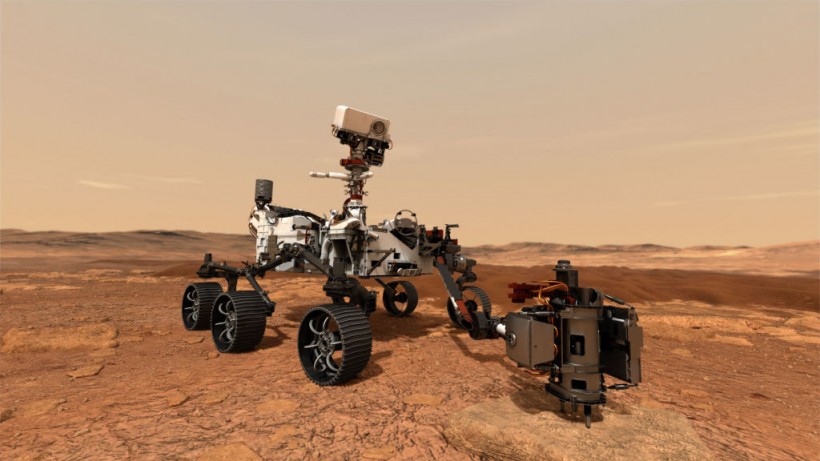NASA's Perseverance rover landed on Jezero Crater on Mars in February 2021 and has been collecting Martian rock samples and other materials for future studies. The rover is investigating the sediment-rich river delta in the crater, hoping to find evidence of life.
Now, members of the Perseverance rover team will be conducting a briefing on the activities of the rover as it continues to gather rock samples in Jezero Crater's river delta.
NASA to Lead Briefing About Perseverance Rover
According to the press release, The briefing will take place at the space agency's Jet Propulsion Laboratory (JPL) in Southern California at 11:30 a.m. EDT (8:30 a.m. PDT) on Thursday, wherein they will provide insights into the mission's first year and a half as the rover continues to explore Mars.
The briefing will be shown live on NASA's website, NASA Television, and the agency's app. It will also be available on various social media accounts of the space agency, such as Twitter, Facebook, and YouTube.
The briefing will be attended by the members of the mission, as well as NASA's Planetary Science Division director Lori Glaze from NASA Headquarters, JPL director Laurie Leshin, Perseverance project manager Art Thompson from JPL, Perseverance project scientist Ken Farley from California Institute of Technology (Caltech).
Also, they will be joined by Sunanda Sharma, a scientist from JPL and Scanning Habitable Environments with Raman and Luminescence for Organics and Chemicals, and Perseverance returned sample scientist David Shuster from the University of California, Berkeley.
The public could ask during the briefing via social media using the #AskNASA.

In this concept illustration provided by NASA, NASA's Perseverance (Mars 2020) rover uses its drill to core a rock sample and will store them in sealed tubes on the planet's surface for future missions to retrieve in the area known as Jezero crater on the planet Mars.
ALSO READ: NASA Mars Perseverance Rover Shares Clear Photo of 10th Rock Sample After Completing Latest Mission
Mars Sample Return Campaign
After one and a half years since the Perseverance rover landed on Martian soil, the team marks the first step in the Mars Sample Return campaign (MSR) that aims to send rock samples to Earth for further study.
These samples were taken during the rover's exploration of the river delta and are thought to be the best way to reveal the early evolution of the Red Planet, which might show signs of ancient life.
According to NASA, the rover is actively scouting locations where the planned MSR Campaign could land spacecraft and collect the Martian rock sample tubes that Perseverance has filled over its stay on the planet. Those sites were being considered because of their proximity to the delta and their relatively flat, lander-friendly terrain.
Engineers are looking for flatter ground because an undulating surface and rocks are harder to land on. They prefer the landing zone to be pancake-flat with a 200-foot (60-meter) radius that will be used for MSR Entry, Descent, and Landing.
MSR Program Manager Richard Cook of NASA's JPL noted that a dull landing place is good because although there are a lot of things needed to be done when the spacecraft arrives to pick up samples, he said sightseeing is not one of those things.
MSR is a historic mission that would allow scientists on Earth to investigate any signs of past microscopic life on Mars. It is an endeavor in partnership between NASA and the European Space Agency (ESA) that involves multiple spacecraft.
RELATED ARTICLE: NASA's Perseverance Rover Collected Martian Lava Rocks Altered by Water in Jezero Crater
Check out more news and information on Space in Science Times.














